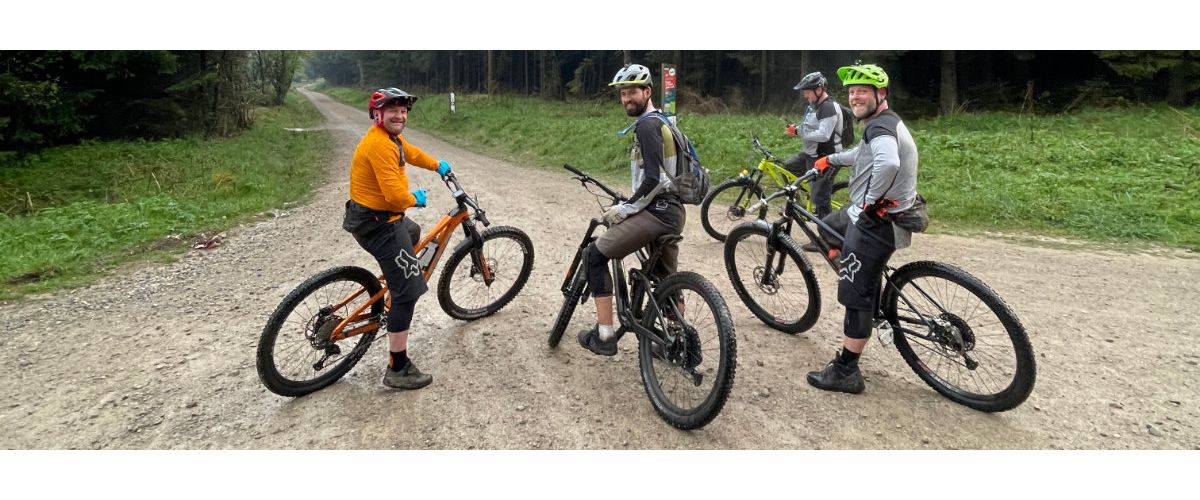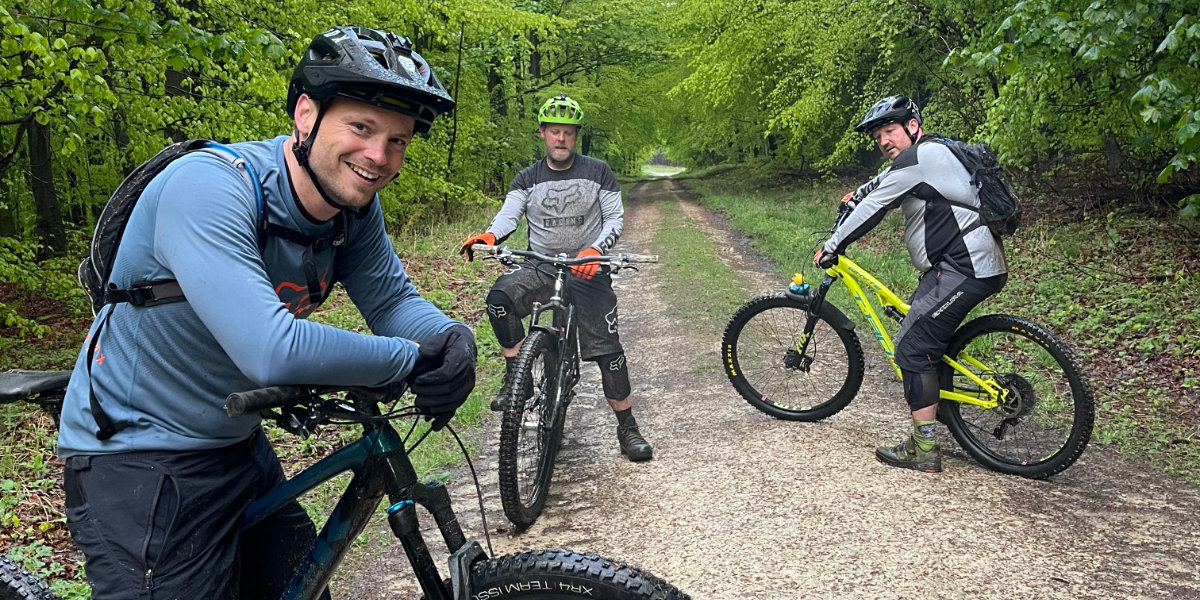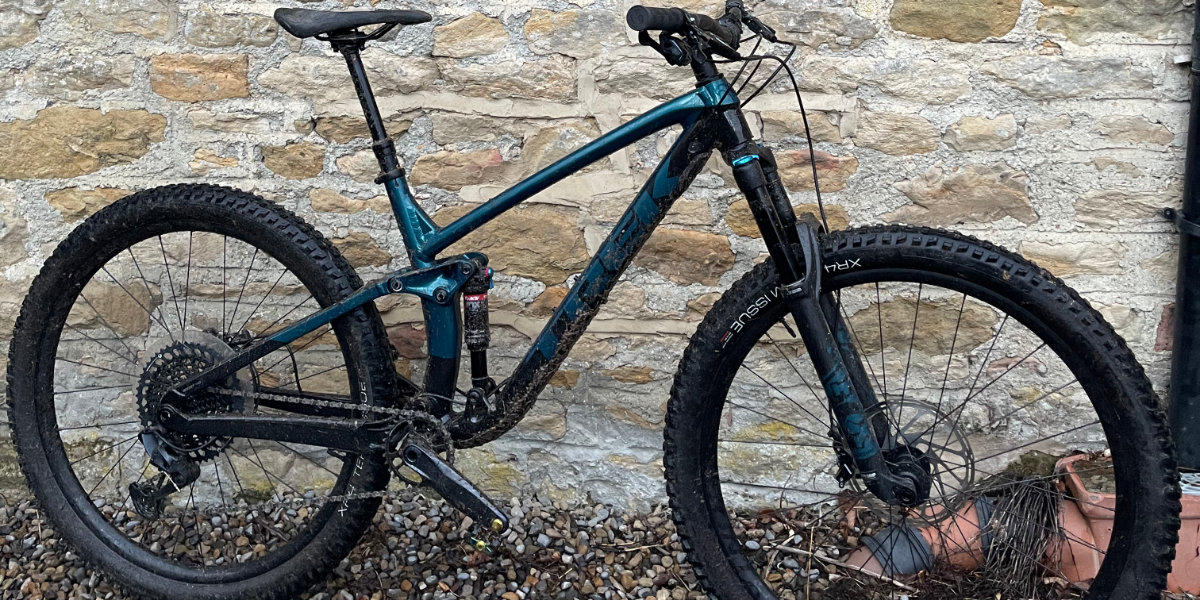
Tim Watson vowed to get more into mountain biking in 2021, having been more of a road rider for years. Here, Tim tells us about his first off-piste ride and three lessons he took away with him.
It’s my first ride out with the lads from Big Bear Bikes.
They’re all really experienced riders, confident and competent enough to take on any trails, but for me it’s my debut off-piste. I’ve always done a lot of road riding and an annual trip to Dalby Forest on the hardtail but here I am at Dalby wondering how I’m going to keep up with these guys, who know the trails and are a lot braver than me. My bike is the 2021 Trek Fuel EX8. It's a great bike with full suspension and perfect for trail riding.
For those new to mountain biking, trail riding is cycling down a narrow path, often rooty or rocky and usually graded like a ski run; green, blue, red or black, from nice and sedate to very technical and challenging. Off-piste riding, otherwise known as “wild trail” riding, follows the skiing example. These unmarked trails that are built by enthusiastic locals in their own time. They aren't graded or even officially recognised, so be prepared for some very steep and technical riding.
We start off with usual sections of the red route. Pretty quickly we’re away from the trail and starting to explore, taking on two off-piste sections known locally as Golden Axe and Slow Worm.
My previous bike was a hardtail but I’m relieved to be on the Fuel EX. Straight away I needed all the travel my suspension could give. We dropped into the equivalent of a half pipe on a ski slope, only this one was full of tree roots and rocks. It had been raining all day so the trails are slippery with pools of water hiding any trouble that may lurk beneath.

I won't lie; I found off-piste pretty tough, having to stop on two occasions. That's me above on the left, looking exhausted.
As a road rider who’s always ridden clipped in I quickly decided riding with clips on my mountain bike isn’t for me. Being clipped in made it more difficult to put a foot down in a tight turn or on a slippery part of the trail if I came unstuck.
The Big Bear Bikes team were really encouraging and taught me three really important lessons about my new bike so I thought I’d share their wisdom for anyone considering going wild on the trails for the first time.
#1 The dropper post
My new bike (below) has a dropper post that makes descending steep trails easier but having only ever ridden a hardtail without one, I kept forgetting to use it. A dropper post is the seat-post for your saddle with a special feature that lets the saddle drop down to the frame at the press of a button on the handlebars. This allows the rider to get much closer to the bike and is very useful when descending very steep, technical trails.
Lesson one: At the start of every steep descent, make sure you drop your dropper post. It makes downhill life a lot easier.
#2 Tyre pressures.
As a mostly road rider, I'm used to running tyre pressures of around 110PSI. I understand that mountain bikes are totally different and thought I was running a low pressure at circa 40PSI. The team encouraged me to drop my pressures to between 30 and 35PSI. This allows more of the tyre tread to grip the trail surface, giving you more confidence and more stability not only in the turns but also on slippery terrain. It's just as important in the climbs when you're putting in max effort as it is in descents where you need to have confidence you're not going to lose your front wheel.
Lesson two: Drop your tyre pressures to 30 to 35PSI for riding MTBs.

#3 Suspension.
The Trek Fuel EX8 comes with high end suspension for both wheels made by one of the leading component manufacturers, Fox Racing, with a front fork and a rear shock. It has three modes; locked out, a mid-mode and fully open, giving you maximum travel and therefore maximum benefit in rougher terrain. The additional travel reduces fatigue, increases stability and confidence, and generally makes your riding smoother. Moving from a hardtail, again this was something I just kept forgetting but opening the full suspension massively improved my confidence and my ability on deeper, more technical descents.
Lesson three: Make sure you're in the right suspension mode for the type of terrain.
Oh, and one more thing
The mechanics at Big Bear Bikes told me about the “M check”, a regular maintenance routine to ensure you're safe on your bike. Halfway round my ride I realised the rear axle had worked its way loose. Fortunately, I found this between sections when having a rest but I learnt that aggressive riding and trail riding increases wear on your bike and it's vital to carry out these checks every time you ride. To complete an M check, start with your front axle, then check your bars then your pedals and crank, your saddle and seatpost, and finally your rear wheel axle.
So what do I make a trail riding and off piste? It’s exciting, leaves you with loads of stories to tell and is a great crack with a good group of friends. I’ll be doing a lot more of it.
For great advice, talk to our friendly team in store or come on one of our great courses this summer - read more and book here.